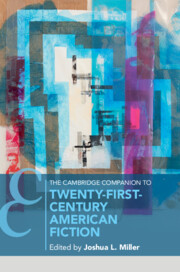Book contents
Introduction
Published online by Cambridge University Press: 02 September 2021
Summary
While teaching a course titled “The Literature of Now: 21st Century US Fiction,” I wondered how undergraduates understood the cultural and social dimensions of “now.” We had been focused on literary uses of temporal paradoxes, like those suffusing Ozeki’s narrative in the epigraph above, but our discussions broadened into the question of how we could decide what (and who) were our contemporaries. I improvised an exercise on the first day of my second time teaching the course and asked the class to answer the question, “When did the present literary or cultural era begin?” I anticipated that they would all have similar responses (2000 or 9/11) and that we’d have a predictable conversation about what constrains our definitions of the contemporary moment. To my surprise, only a few of the forty students gave those answers. Their ideas ranged widely across decades (from the 1960s to the 2010s) and historical trends (technology, politics, economics, and social/demographic). Two students cited the Y2K bug hysteria, leading me to wonder how they even knew about that nonevent. Another referenced Civil Rights movements as precursors to Occupy Wall Street, Black Lives Matter, and hashtag activism.
- Type
- Chapter
- Information
- Publisher: Cambridge University PressPrint publication year: 2021



